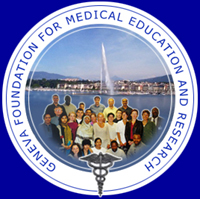Evaluation of the scientific product by user´s criteria: pressing need for its improvement
Valoración del producto científico por criterios de usuarios: necesidad apremiante para su perfeccionamiento
Idania Guadalupe Fuentes Morales, Yuri Toledano Prieto, Adis Adriana Capote Pérez
Villa Clara University of Medical Sciences. Cuba
To the editor:
Taking into account that the experts, specialists and users´ criteria are widely used in scientific research to assess their products, the authors of this letter, after reviewing the articles published in recent years in several journals, including the prestigious EDUMECENTRO magazine, we note that the experts and specialists´ criteria tend to be more used, and the users´ criteria isn´t used or not declared, even when it is used. For this reason, we consider it appropriate to disclose some notes on the subject.
To illustrate this, we review various publications in which these criteria are expressed from specialists:1
The proposal was evaluated by criteria of six specialists in Comprehensive General Medicine and three in Herbal and Folk Medicine, with more than five years of experience in teaching and teaching ranks of Assistant and Associate Professor. The indicators for the evaluation were relevance, correctness in the integration of the contents, feasibility and flexibility of its methodological structure.
From experts:2
For the evaluation of the designed proposal, a group of experts was selected by means of the Delphy method, the coefficient of knowledge and competence of each was determined, after that 21 were chosen with a level between medium and high assuming the following ranges for the classification:
0.8 = K = 1 high competence.
0.5 = K <0.8 average competence.
K <0.5 low competence.
Once the experts were selected, a questionnaire was sent to them to evaluate the model and its practical results. The peer method was applied in which the matrix of absolute frequency, cumulative frequency, relative frequency, and abscissa and distribution values of the categories was calculated according to the values of the respective limits.
The scale values of the category limits are represented in a linear graph, in which the results of the process can be seen. Category 1 (C1) represents Very Adequate, Category 2 (C2) Fairly Adequate, Category 3 (C3) Adequate, Category 4 (C4) little Adequate and Category 5 (C5) Unsuitable.
From users: 3
On the assessment made by students as users, after viewing the material:
- 100% considered that the audiovisual allowed them to have orientation about the Dentistry career.
- 100% thought that the dialogues were understandable.
- 98% appreciated that the shots are good and 2 % regular.
- The music was rated as adequate and enjoyable.
- The speech was valued by 100% of the students as counseling.
- The majority estimated that as a whole, the audiovisual is attractive, dynamic and novel, for the training activity and vocational guidance.
Several authors have given their definitions on these terms: 4-6
In general, «specialist» is the professional whose exercise of the profession is related to the object of study of the investigation and has the required requirements to assess the feasibility, applicability and viability of a particular product. The application of this criterion has shown that it is an effective method to improve the scientific results of systems of actions, programs, methodologies, softwares, etc. It is the most used in our university environment.
The evaluation by experts is used to verify the quality and effectiveness of the results of the research, both in its theoretical conception and in its application in social practice, that is, the impact that is expected to be obtained with the application of the theoretical results in the practice, when it is impossible or very difficult to carry out the measurements by more precise methods, such as the experiment, or when the evaluation of the experts is desired before doing it to foresee possible failure factors.
The users´ criteria is a method through which the opinions of the subjects who become direct beneficiaries of a proposal are obtained, who are also responsible for the application of its results; they are not necessarily specialists in a subject, master´s or doctorate´s degree with an important academic level, and they don´t need to have a deep knowledge on the subject; their evaluative criteria are not always considered authoritative, but they are equally important, since ultimately they are the consumers or not of the proposed product, for the purposes pursued when using them and for the requirements or demands of the subjects involved.
In terms of health and education, in Cuba users are increasingly demanding and rigorous, taking into account the high educational levels of the population and their assistance to certain services. Going into the evaluation of users about the products emanating from these types of scientific research entails obtaining a subjective, but direct, evaluation of the final result of the benefit offered.
The authors warn that not only should the assessment of the product emanated from the research be made through specialists and experts, but also the satisfaction of the user; Knowing what it perceives will allow the students to make decisions tending to satisfy their needs and demands.
Declaration of interests
The authors declare no conflict of interest.
BIBLIOGRAPHIC REFERENCES
1. Tosar Pérez MA. Estrategia curricular de Medicina Natural y Tradicional: su implementación en Medicina General Integral. EDUMECENTRO [Internet]. 2017 [citado 4 Nov 2017];9(4):[aprox. 14 p.]. Disponible en: http://scielo.sld.cu/scielo.php?script=sci_arttext&pid=S2077-28742017000400004&lng=es
2. Blanco Balbeito N, Herrera Santana D, Carballo Machado R. Valoración del diseño de un modelo teórico metodológico para desarrollar habilidades investigativas en Medicina. EDUMECENTRO [Internet]. 2016 [citado 20 Dic 2017];8(3):[aprox. 13 p.]. Disponible en: http://scielo.sld.cu/scielo.php?script=sci_arttext&pid=S2077-28742016000300009&lng=es
3. Contreras Pérez JM, Mirabal Díaz JM, Fong Zurbano GL, Machado Contreras MD, de la Hoz Rojas L, Cobo Lueje MR. Visita virtual a la Facultad de Estomatología: pertinencia en la orientación profesional de la carrera. EDUMECENTRO [Internet]. 2017 [citado 20 Nov 2017];9(3):[aprox. 14 p.]. Disponible en: http://scielo.sld.cu/scielo.php?script=sci_arttext&pid=S2077-28742017000300015&lng=es&nrm=iso&tlng=es
4. Folgueira RS, Mesa Anoceto M. Selección de Lecturas de Análisis de Datos en la Cultura Física. La Habana: Deportes; 2006.
5. Matos Z, Matos C. El método de criterio de usuarios. Su utilización en la investigación educativa [tesis]. Guantánamo: Instituto Superior Pedagógico «Raúl Gómez García»; 2006.
6. Mesa Anoceto M. Asesoría estadística en la investigación aplicada al deporte. La Habana: Editorial José Martí; 2006.
Submitted: December 20 2017.
Accepted:
June 18 2018.
Idania Guadalupe Fuentes Morales. Villa Clara University of Medical Sciences. Cuba. E-
mail: idaniagfm@infomed.sld.cu
Copyright (c) 2018 EDUMECENTRO










